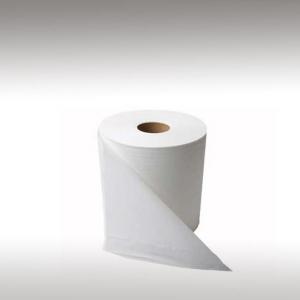
CELLULOSE PAPER - TOOLS

BASE / GENERAL DATA
Information submited: May 30, 2016 Modified: February 19, 2018 By: OperaDreamhouse
Cellulose is an organic compound with the formula (C6 H10 O5). Cellulose is an important structural component of the primary cell wall of green plants, many forms of algae and the oomycetes. It is mainly used to produce paperboard and paper.
This substance has no taste, is odorless, is hydrophilic with the contact angle of 20-30, is insoluble in water and most organic solvents, is chiral and is biodegradable. It was shown to melt at 467 °C in 2016.
Cellulose was discovered in 1838 by the French chemist Anselme Payen, who isolated it from plant matter and determined its chemical formula.
Cellulose is the most abundant organic polymer on Earth. The Cellulose content of cotton fiber is 90%, that of wood is 40-50% and that of dried hemp is approximately 57%.
Paper is a thin material produced by pressing together moist fibres of Cellulose pulp derived from wood, rags or grasses, and drying them into flexible sheets. It is a versatile material with many uses, including writing, printing, packaging, cleaning, and a number of industrial and construction processes.
The oldest known archaeological fragments of the immediate precursor to modern paper, date to the 2nd century BC in China. The pulp papermaking process is ascribed to Cai Lun, a 2nd-century AD Han court eunuch. With paper as an effective substitute for silk in many applications.
Its knowledge and uses spread from China through the Middle East to medieval Europe in the 13th century, where the first water powered paper mills were built. Because of paper's introduction to the West through the city of Baghdad, it was first called bagdatikos.
Cellulose paper producing process:
To begin the process, the cellulose has to be boiled, beaten, or shredded into tiny fibers. The paper pulp, made up of those tiny fibers is then spread into sheets, pressed, and dried to make paper. To make strong paper, you need long fibers which is why the pulp has to be beaten instead of chopped. Beating the cellulose separates the fibers from each other, while leaving individual fibers intact.
The reason cellulose molecules in paper stick together after they’re wet is that they are made of long strings of glucose molecules - one of the components of common table sugar.
When cellulose is beaten into a watery pulp, some of the glucose molecules dissolve in the water. Then, when the pulp is spread in a sheet to dry, the glucose re-bonds with the cellulose molecules to hold the paper together.
Because paper comes from a variety of natural materials that are made of much more than pure cellulose, other chemicals, mixed in with the cellulose weaken the paper and cause it to break down faster.
This substance has no taste, is odorless, is hydrophilic with the contact angle of 20-30, is insoluble in water and most organic solvents, is chiral and is biodegradable. It was shown to melt at 467 °C in 2016.
Cellulose was discovered in 1838 by the French chemist Anselme Payen, who isolated it from plant matter and determined its chemical formula.
Cellulose is the most abundant organic polymer on Earth. The Cellulose content of cotton fiber is 90%, that of wood is 40-50% and that of dried hemp is approximately 57%.
Paper is a thin material produced by pressing together moist fibres of Cellulose pulp derived from wood, rags or grasses, and drying them into flexible sheets. It is a versatile material with many uses, including writing, printing, packaging, cleaning, and a number of industrial and construction processes.
The oldest known archaeological fragments of the immediate precursor to modern paper, date to the 2nd century BC in China. The pulp papermaking process is ascribed to Cai Lun, a 2nd-century AD Han court eunuch. With paper as an effective substitute for silk in many applications.
Its knowledge and uses spread from China through the Middle East to medieval Europe in the 13th century, where the first water powered paper mills were built. Because of paper's introduction to the West through the city of Baghdad, it was first called bagdatikos.
Cellulose paper producing process:
To begin the process, the cellulose has to be boiled, beaten, or shredded into tiny fibers. The paper pulp, made up of those tiny fibers is then spread into sheets, pressed, and dried to make paper. To make strong paper, you need long fibers which is why the pulp has to be beaten instead of chopped. Beating the cellulose separates the fibers from each other, while leaving individual fibers intact.
The reason cellulose molecules in paper stick together after they’re wet is that they are made of long strings of glucose molecules - one of the components of common table sugar.
When cellulose is beaten into a watery pulp, some of the glucose molecules dissolve in the water. Then, when the pulp is spread in a sheet to dry, the glucose re-bonds with the cellulose molecules to hold the paper together.
Because paper comes from a variety of natural materials that are made of much more than pure cellulose, other chemicals, mixed in with the cellulose weaken the paper and cause it to break down faster.

SPIRITUAL PRACTISES DATA

MEDICINE / HEALTH DATA

BEAUTY / COSMETICS DATA

FOOD / COOKING DATA
COMMENTS
No comments.
Newest mixtures containing Cellulose Paper:

Moxibustion treatment with Moxa stick
May 30, 2016


